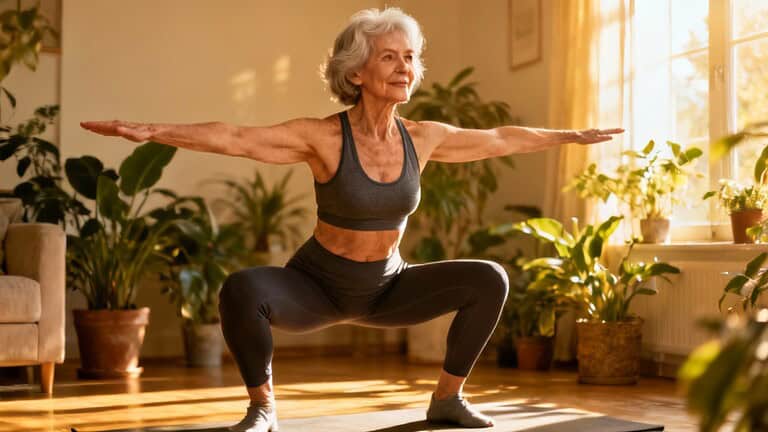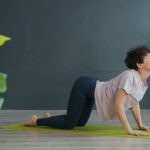What if one simple exercise could help you age stronger, move better, and feel younger without expensive equipment or complicated routines?
The answer might surprise you—it’s the humble squat, a movement that delivers benefits far beyond just building leg strength.
For adults over 50, daily squats can transform everything from hormone balance to mental clarity. Here are 10 surprising benefits you probably haven’t considered.
1. Natural Hormone Revival
After 50, hormone decline often feels inevitable, but squats can help turn this around. This powerful exercise triggers your body’s natural anabolic response, releasing testosterone and growth hormone—key players in maintaining strength, metabolism, and mood.
Research shows that even bodyweight squats done consistently can measurably increase natural testosterone and insulin sensitivity in older adults.
2. Improved Circulation
Squats act like a natural heart pump for your lower body, pushing blood upward and improving venous return. This helps prevent blood from pooling in the legs—a common issue for sedentary adults.
Better circulation means more oxygen to your brain, faster nutrient delivery to muscles, and improved waste removal throughout your body.
3. Bone Density Protection
You can’t feel your bones getting weaker until they break, but squats provide the gentle, controlled stress that stimulates bone-building activity.
Studies show older adults who perform squats regularly see significant improvements in bone mineral density, especially in high-risk areas like hips, spine, and femurs.
4. Trustworthy Balance
Each squat coordinates dozens of muscles to keep you upright, building neuromuscular awareness and proprioception—your body’s ability to know where it is in space.
This creates an internal GPS that keeps you steady even on uneven ground or in low light.
5. Metabolism Boost
Squats recruit large muscle groups that demand serious energy, meaning your body burns more calories even after your workout ends.
Building lean muscle through squats raises your resting metabolic rate, so you burn more fuel even when resting.
6. Joint Support
Contrary to popular belief, squats are excellent for joint health when done properly. They train the muscles, ligaments, and tendons that stabilize your knees and hips, while encouraging the release of synovial fluid that naturally lubricates joints.
7. Better Posture
Squats naturally train your body into better alignment by engaging deep core stabilizers, lower back, and upper spine.
Over time, this activation becomes muscle memory, helping you walk taller and reduce everyday strain that causes end-of-day soreness.
8. Mental Clarity
Squats increase blood flow to the brain and stimulate the release of brain-derived neurotrophic factor (BDNF), a key protein that supports memory, learning, and cognitive resilience. The coordination challenge also activates neural pathways that keep your brain young.
9. Sustainable Energy
Instead of relying on caffeine for energy, squats activate your body’s natural energy factories—mitochondria in your cells. This creates sustainable, all-day energy rather than temporary spikes from stimulants.
10. Long-Term Independence
The ultimate benefit of squats after 50 is maintaining independence. They build the strength, coordination, and joint stability needed for everyday activities like getting up from chairs, carrying groceries, and climbing stairs without assistance.
How to Squat Safely After 50
Stand with feet shoulder-width apart, toes slightly turned out. Keep your chest lifted and core engaged. Bend your hips and knees together as if sitting into a chair, going only as low as feels safe.
Ensure your knees stay aligned with your toes and press through your heels to return to standing. Start near a chair or wall for balance if needed, and remember that quality matters more than depth.
Who Should Be Cautious?
If you’ve had recent knee, hip, or spinal surgery, or suffer from severe joint pain, advanced arthritis, or balance disorders, consult your doctor before starting squats.
Modifications or alternative movements may be safer until you’re cleared for full-range training.
Conclusion
With just 50 squats a day, you’re not only building stronger legs—you’re unlocking better hormones, improved balance, boosted energy, clearer thinking, and joint support that keeps you moving with confidence.
You’re protecting your bones, strengthening your core, and investing in long-term independence. Start with just five or ten squats, holding onto a chair if needed.
What matters is beginning, because every rep is a decision that says, “I’m not done yet.”








